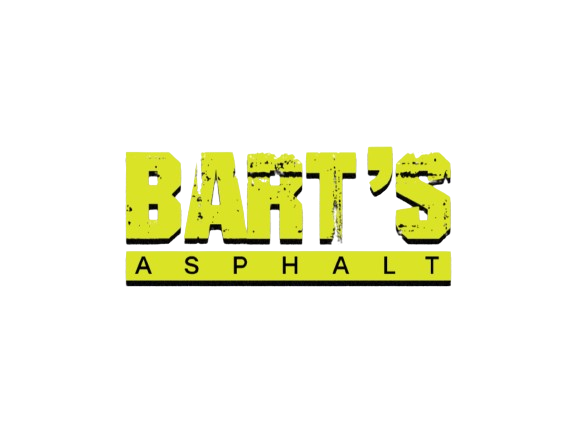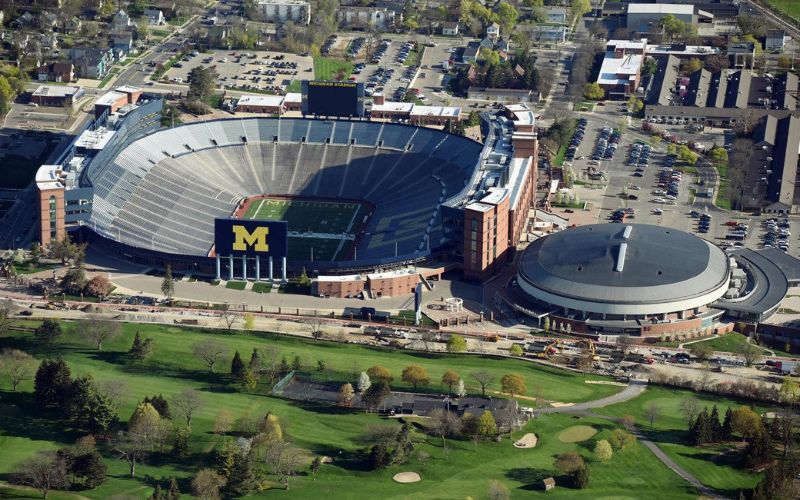The University of Michigan’s presence transforms Ann Arbor into a unique commercial ecosystem, creating distinctive challenges for property managers and business owners. Asphalt surfaces in this dynamic area face an unprecedented combination of environmental stressors, traffic patterns, and seasonal variations that demand sophisticated maintenance strategies.
From the bustling corridors near State Street to the expansive parking areas surrounding campus, commercial properties in the university district require a nuanced approach to infrastructure maintenance. The constant flow of students, faculty, visitors, and local traffic creates a complex landscape of asphalt wear and maintenance challenges that go far beyond standard commercial properties.
Understanding the University District's Unique Environment
Ann Arbor’s university district represents a microcosm of complex infrastructure challenges. The area experiences dramatic shifts in traffic patterns driven by the academic calendar, with intense periods of activity punctuated by relative calm. Move-in and move-out weeks bring thousands of vehicles loaded with furniture and personal belongings, creating concentrated stress on parking lots and roadways.
Seasonal variations create a perfect storm of infrastructure challenges. Michigan’s extreme climate – with harsh winters and intense summer heat – subjects asphalt surfaces to constant environmental stress. The university area experiences unique traffic patterns that amplify these challenges, with peak periods during football weekends, special campus events, and academic transitions.
The demographic composition of the university district drives distinctive wear patterns. Young drivers, high-volume vehicle turnover, and diverse transportation modes create stress points that differ dramatically from standard commercial zones. Rideshares, campus shuttles, delivery vehicles, and personal cars interact in a complex ecosystem that demands specialized maintenance approaches.
Specific Asphalt Challenges in University Commercial Zones
Commercial properties near the University of Michigan face a perfect storm of asphalt deterioration factors. High-traffic areas experience concentrated wear that goes beyond typical commercial usage. Parking lots near popular campus corridors endure constant loading, frequent turning movements, and minimal recovery time.
Seasonal stress factors are particularly intense. Winter brings harsh freeze-thaw cycles that can rapidly degrade asphalt surfaces. Road salt and deicing chemicals, essential for winter safety, simultaneously attack the asphalt’s structural integrity. Summer heat intensifies these damages, causing surface oxidation and creating conditions for rapid deterioration.
Special events create additional maintenance challenges. Home football games at Michigan Stadium bring over 100,000 visitors, creating massive, concentrated traffic loads that can cause significant pavement stress. Art fairs, graduation ceremonies, and other campus-wide events further challenge commercial parking areas, creating unique maintenance requirements.
Diagnostic Approaches for University Area Properties
Modern asphalt maintenance in the university district requires sophisticated diagnostic approaches that transcend traditional visual inspections. Advanced technologies like ground-penetrating radar and infrared scanning provide unprecedented insights into pavement condition, detecting subsurface variations and potential structural weaknesses that would remain invisible to the naked eye.
Traffic pattern analysis has become a critical component of diagnostic strategies. By comprehensively mapping vehicle movements, load concentrations, and seasonal variations, property managers can develop predictive maintenance approaches that anticipate potential issues before they become critical problems. This data-driven method allows for targeted repairs that address specific stress points with unprecedented precision, moving beyond generalized maintenance strategies.
The diagnostic process involves a multilayered approach to understanding pavement conditions. Professionals conduct a detailed surface condition analysis that goes far beyond simple visual assessment. This comprehensive evaluation examines the stability of the base layer, assesses drainage patterns, and analyzes specific traffic load characteristics. Environmental exposure factors are carefully considered, creating a holistic understanding of the pavement’s overall health and potential vulnerabilities.
Seasonal variations play a crucial role in diagnostic approaches. The unique traffic patterns associated with the University of Michigan create distinctive stress points that require specialized assessment techniques. Move-in and move-out periods, football weekends, and special campus events all generate concentrated traffic loads that can create complex wear patterns. Diagnostic teams must develop nuanced approaches that account for these unique usage cycles, ensuring that maintenance strategies are precisely tailored to the property’s specific challenges.
Specialized Maintenance Strategies
University district properties demand customized maintenance approaches that go far beyond standard commercial asphalt care. The primary objective is to develop repair strategies that maintain accessibility, protect property value, and extend asphalt lifecycle while minimizing operational disruptions to surrounding businesses and campus activities.
Timing emerges as a critical factor in university area maintenance. Strategic scheduling requires an intimate understanding of the academic calendar and campus operations. Property managers must carefully plan maintenance activities to coincide with periods of reduced campus activity, such as semester breaks or summer sessions. This approach allows for comprehensive repairs and maintenance while minimizing impact on daily operations, ensuring that critical infrastructure work does not interfere with the vibrant university ecosystem.
Specialized materials play a crucial role in addressing the unique challenges of university district infrastructure. High-performance, flexible asphalt mixes are specifically engineered to withstand the extreme temperature variations and concentrated traffic loads characteristic of these areas. These advanced materials incorporate specialized polymers and additives that provide enhanced durability, greater flexibility, and superior resistance to environmental stressors.
The maintenance approach must be inherently adaptable, capable of addressing the dynamic nature of university district properties. Different areas may require distinct strategies – parking lots near academic buildings experience different stress patterns compared to areas near student housing or athletic facilities. Maintenance teams must develop a nuanced understanding of these variations, creating targeted approaches that address the specific needs of each unique space within the university district.
Proactive maintenance becomes a critical strategy for managing the complex infrastructure of university area properties. Rather than waiting for visible damage to occur, maintenance professionals implement preventative techniques that protect the asphalt surface from potential deterioration. This includes regular cleaning, timely crack sealing, strategic sealcoating, and ongoing monitoring that allows for early intervention before minor issues can develop into significant infrastructure challenges.
Economic Considerations for Property Managers
The financial landscape of asphalt maintenance in the university district represents a sophisticated investment strategy that goes far beyond simple repair expenses. Property managers must approach infrastructure maintenance as a critical financial asset management process, balancing immediate costs with long-term economic benefits.
Comparative cost analyses reveal dramatic economic implications. Reactive repair approaches can cost between $20-$50 per square foot, while proactive maintenance strategies typically range from $5-$10 per square foot. Complete pavement replacement becomes the most expensive option, often exceeding $75-$100 per square foot. These figures demonstrate the profound financial advantages of a strategic, preventative maintenance approach.
Businesses that invest in regular maintenance can potentially save up to 70% on long-term asphalt-related expenses. The savings extend far beyond direct repair costs, encompassing reduced liability risks, improved property appearance, and minimized operational disruptions. The economic benefits are particularly significant for university district properties, where well-maintained surfaces enhance property value, create positive first impressions for potential tenants or visitors, and demonstrate a commitment to professional infrastructure management.
Seasonal Maintenance Planning
Seasonal maintenance in Ann Arbor’s university district requires a sophisticated, adaptive approach that anticipates the unique challenges of each academic term. Winter preparation represents the most critical maintenance window, with strategies designed to protect asphalt surfaces from Michigan’s most destructive environmental conditions.
Late fall provides an optimal window for comprehensive repairs, crack sealing, and protective treatments. The goal is to create a resilient surface that can withstand extreme road treatments, frequent plowing, and constant freeze-thaw cycles. Specialized sealants applied during this period create a protective barrier that shields the asphalt from moisture infiltration and chemical damage.
Summer emerges as the ideal period for more extensive repair and renovation projects. The extended daylight hours and stable temperatures provide perfect conditions for comprehensive asphalt work. During these months, reduced campus activity allows property managers to undertake significant maintenance projects with minimal disruption.
Move-in and move-out periods present unique challenges that demand specialized maintenance approaches. These intense weeks represent some of the most challenging periods for asphalt surfaces, with thousands of vehicles creating concentrated stress points. Proactive property managers implement strategic repair and reinforcement techniques before these periods to mitigate potential damage.
Technology and Innovation in University Area Asphalt Management
Technological innovations are transforming the approach to asphalt maintenance in university districts. Advanced diagnostic technologies now provide unprecedented insights that enable predictive, data-driven maintenance strategies. Ground-penetrating radar, infrared scanning, and sophisticated monitoring systems allow for early detection of potential infrastructure issues.
Smart monitoring systems represent a revolutionary approach to infrastructure management. These advanced technologies provide continuous surface condition assessment, predict potential maintenance needs, track environmental impact, optimize repair scheduling, and ultimately reduce long-term maintenance costs. By leveraging real-time data and sophisticated analytics, property managers can transform reactive maintenance approaches into proactive, strategic infrastructure management.
Eco-friendly maintenance solutions are emerging as a critical area of innovation. Modern approaches focus on developing asphalt mixes that incorporate recycled materials, reduce carbon footprint, and provide enhanced durability. Manufacturers are creating more sustainable materials that offer improved performance while minimizing environmental impact, allowing businesses to align infrastructure maintenance with broader sustainability goals.
Compliance and Safety Considerations
Compliance in the university district goes far beyond basic maintenance requirements. ADA accessibility is a critical consideration, with parking areas and roadways required to meet stringent accessibility standards. This involves precise measurements, appropriate markings, and consistent maintenance of accessible routes that ensure equal access for all individuals.
Safety considerations demand a comprehensive approach that addresses multiple dimensions of infrastructure management. Pedestrian movement patterns must be carefully analyzed to create surfaces that facilitate safe and efficient navigation. Emergency vehicle access requires meticulous planning to ensure unobstructed pathways during critical situations. Lighting, visibility, surface evenness, and proper drainage all play crucial roles in creating safe and functional commercial spaces.
Navigating the regulatory landscape requires a sophisticated understanding of multiple layers of governance. Local Ann Arbor municipal regulations intersect with university-specific requirements and broader Michigan state infrastructure standards. ADA accessibility guidelines, fire and emergency access regulations, and other compliance factors create a complex maintenance environment that demands expert navigation and precise implementation.
Traffic Flow and Parking Management
Effective traffic flow and parking management represent critical considerations for university district commercial properties. The goal extends beyond simple surface maintenance to creating efficient, safe, and accessible parking environments that support business operations and enhance user experience.
Strategic parking lot design involves a comprehensive approach to space optimization and functionality. Property managers must carefully consider how to maximize space utilization, improve traffic circulation, enhance pedestrian safety, implement clear directional signage, and create accessible parking solutions. This requires a holistic understanding of how vehicles and pedestrians interact within the space, anticipating potential congestion points and designing intuitive traffic patterns.
Advanced marking techniques and intelligent design can significantly improve parking lot functionality. By implementing strategic line striping, creating clear traffic flow patterns, and developing design solutions that maximize available space, property managers can transform parking areas from simple vehicle storage spaces into efficient, safe, and user-friendly environments.
Environmental and Sustainability Factors
Sustainability has become a critical consideration in asphalt maintenance for university district properties. Eco-friendly approaches are no longer simply an environmental responsibility but a sophisticated strategy that can generate significant long-term benefits for commercial properties.
Advanced sustainable maintenance technologies offer multiple advantages that extend beyond immediate environmental considerations. These approaches can reduce overall environmental impact while potentially generating cost savings. By implementing green infrastructure strategies, property managers can enhance their corporate sustainability profiles, improve long-term infrastructure performance, and align with broader institutional sustainability goals.
Property managers can leverage these green infrastructure strategies as a competitive differentiator. By demonstrating a commitment to sustainable practices, they can attract environmentally conscious tenants, improve overall property value, and contribute to broader efforts to reduce environmental impact in urban commercial landscapes.
Bart's Asphalt Approach to University District Maintenance
Our approach to university district asphalt maintenance represents the culmination of decades of local expertise, cutting-edge technology, and a deep understanding of Ann Arbor’s unique commercial landscape. We go far beyond standard maintenance services, offering comprehensive infrastructure management strategies.
Local expertise forms the cornerstone of our methodology. Our team possesses an intimate understanding of the University of Michigan area, including its unique traffic patterns, environmental challenges, and specific infrastructure demands. This hyperlocal knowledge allows us to develop maintenance strategies that address the nuanced requirements of university district properties with unprecedented precision.
Conclusion
Effective asphalt maintenance in Ann Arbor’s university district represents a sophisticated approach to infrastructure management. By understanding the unique challenges of this dynamic environment and implementing strategic maintenance solutions, property managers can protect their investments, ensure safety, and maintain professional appearances.
Frequently Asked Questions
Q: How often should our university area property’s asphalt be professionally assessed? A: We recommend comprehensive professional inspections twice annually – once before winter and once after the spring semester – with additional spot checks during high-stress periods.
Q: Can you maintain our asphalt without disrupting campus operations? A: Absolutely. We specialize in phased maintenance approaches that minimize disruption, often working during off-peak hours or academic breaks.
Q: What makes your approach unique to university district properties? A: Our deep understanding of Ann Arbor’s specific challenges, combined with advanced technologies and locally engineered maintenance strategies, allows us to provide unparalleled asphalt management solutions.
Ready to protect your university district commercial property’s infrastructure? Contact Bart’s Asphalt for a comprehensive evaluation and customized maintenance strategy.



